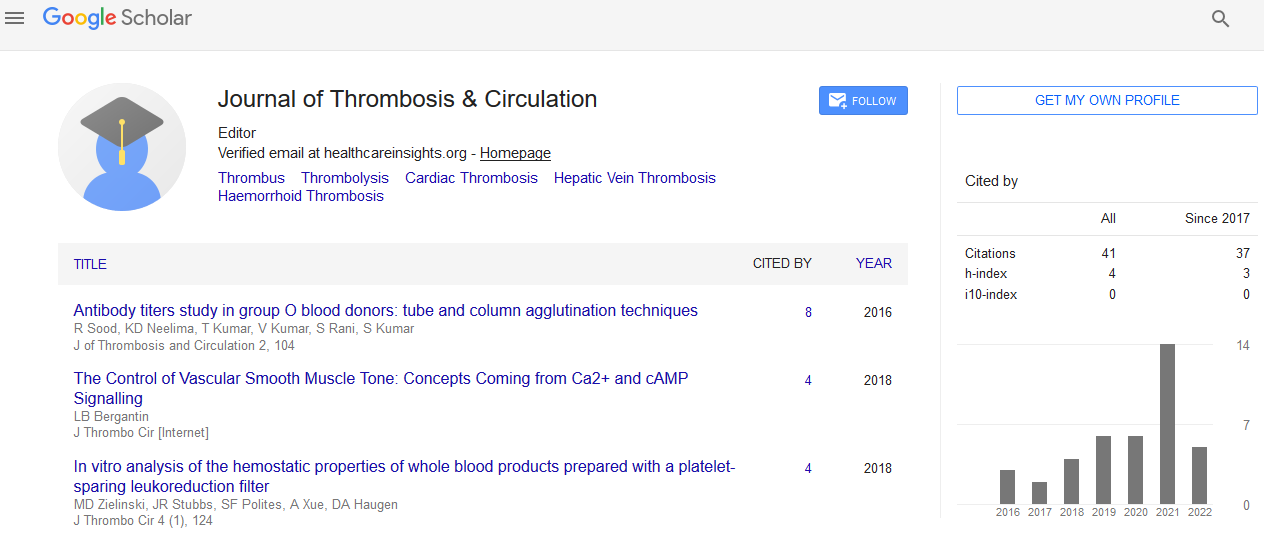Indexed In
- RefSeek
- Hamdard University
- EBSCO A-Z
- Publons
- Google Scholar
Useful Links
Share This Page
Journal Flyer

Open Access Journals
- Agri and Aquaculture
- Biochemistry
- Bioinformatics & Systems Biology
- Business & Management
- Chemistry
- Clinical Sciences
- Engineering
- Food & Nutrition
- General Science
- Genetics & Molecular Biology
- Immunology & Microbiology
- Medical Sciences
- Neuroscience & Psychology
- Nursing & Health Care
- Pharmaceutical Sciences
Abstract
Optimal and Individualized Pneumatic Calf Compression Pressure using Vekroosan to Improve Femoral Venous Flow Velocity in Patients with Severe Post Thrombotic Syndrome: Case Reports and Literature Review
R Ramakrishna, W Alexander, R Hockings and R Gordon
Post thrombotic syndrome (PTS) symptoms usually occur after deep venous thrombosis (DVT) and eventually affects up to 50% of patients who have had a symptomatic DVT. Symptoms can include lower leg oedema, pain, changes in skin pigmentation, and venous ulcers. Severe PTS has a significant negative effect on quality of life. Thrombolytic therapy for acute DVT may decrease the risk of PTS, but carries its own risks. In patients with symptomatic proximal DVT, the use of knee-high compression stockings capable of exerting a pressure of at least 30 to 40 mmHg at the ankle and less at the knee has been found to be useful. There are practical difficulties in using these stockings and hence Intermittent Pneumatic Calf compression (IPC) devices are recommended. However not all devices have the capability to meet the requirements of mobile patients with severe PTS features. One such device was trialled on these patients to assess peak femoral flow velocity (PFV) and clinical benefits. There was mean 1.8 cm improvement in calf circumference measurements, post therapy and significant individual variations in achieving optimal femoral flow velocity. At a calf compression pressure of 40 mmHg, lower and upper chambers resulted in greater PFV in some patients and at 80 mmHg, middle and upper chambers achieved greater PFV in others. There was a significant variability noted in the PFV, although there was a uniform significant clinical benefit, hence the recommendation of individualising the calf compression pressures to meet the needs of these patients. This device appears to have addressed the needs of some of these patients.

